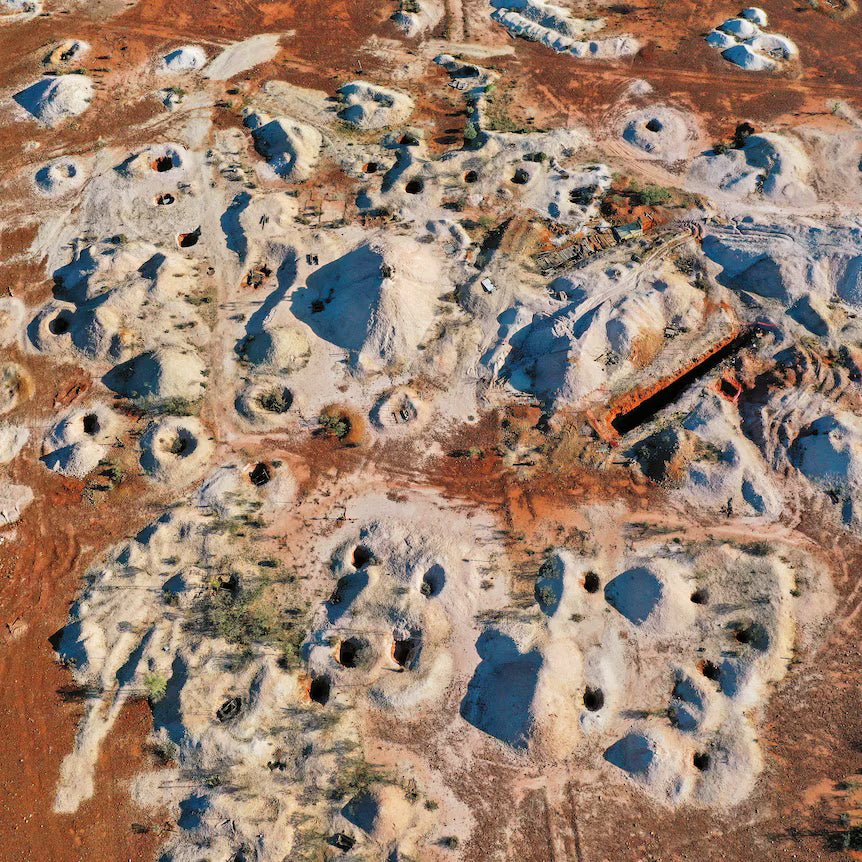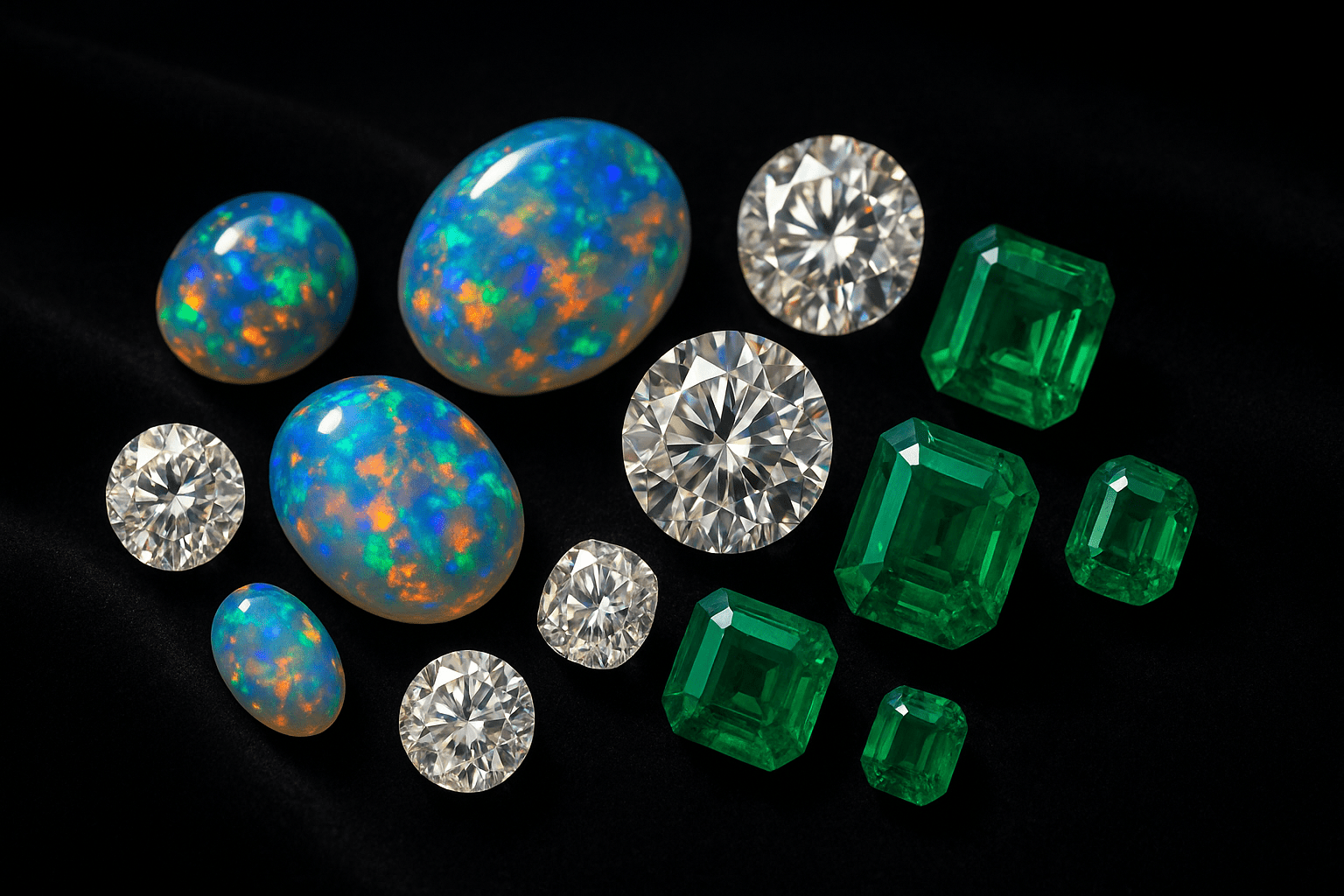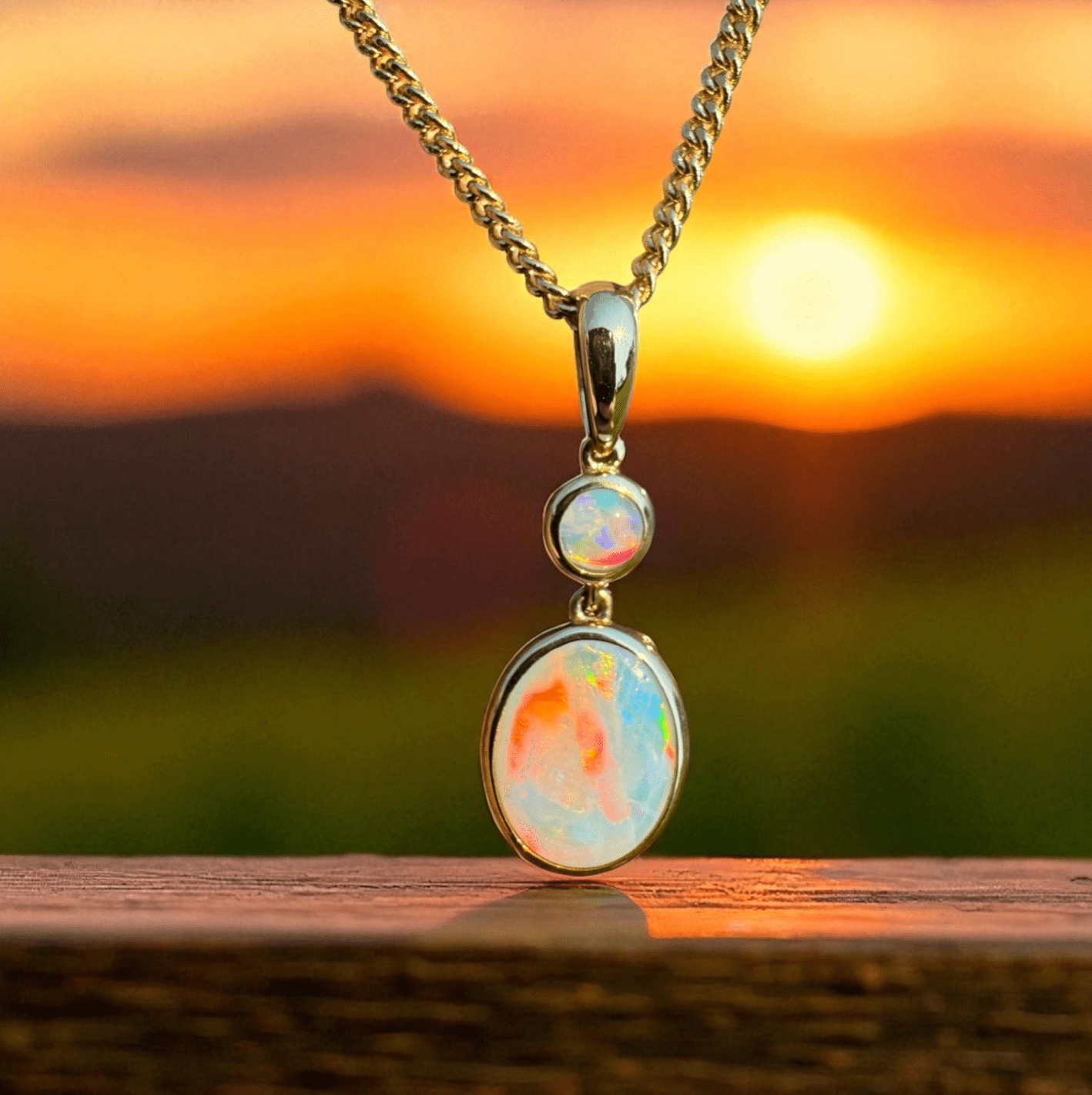
The History of Australian Opal Mining: From Outback Struggle to Global Gemstone Fame
The Early Discoveries
Opal mining in Australia began in the late 1800s, with discoveries at White Cliffs in New South Wales quickly sparking interest. These first finds revealed stones with brilliant colour play that stunned jewellers across Europe. What followed was a rush of miners eager to stake their claim in some of the harshest landscapes on Earth.
Unlike the large-scale operations that defined gold and coal mining, opal mining was—and remains—an industry dominated by individuals and families. Each shaft, claim, and camp carried the hopes of striking that elusive “pocket of colour” that could transform lives overnight.
Coober Pedy: Life Underground
As the story goes, in 1915, a boy searching for water stumbled upon a glittering stone that would lead to Coober Pedy’s fame. Known today as the “opal capital of the world,” the town produces some of the finest white and crystal opals.
But conditions in Coober Pedy were brutal. The scorching desert heat made living above ground nearly impossible, leading miners to dig homes, shops, and even churches into the hillsides. These “dugouts” remain a hallmark of the town today. Coober Pedy’s opals, with their pastel fire and versatility in jewellery, continue to be loved around the world.
Lightning Ridge: Home of the Black Opal
If Coober Pedy is famous for white opals, Lightning Ridge is legendary for its black opals. Discovered in the early 1900s, the Ridge quickly earned its reputation as the only place on Earth producing black opals of extraordinary brilliance. With their dark body tone and flashes of vivid colour, these gems became the most valuable opals on the market.
Life in Lightning Ridge was as tough as the stones were beautiful. Harsh conditions, unpredictable mining, and long odds meant few struck it rich, but those who did found fortune in gems now sold for tens of thousands per carat.
Boulder Opal Fields of Queensland
Queensland brought another gift to the gemstone world: boulder opals. Found in ironstone boulders, these opals are cut with their natural backing intact. The effect is striking—brilliant opal fire framed by rich, earthy host rock. This durability makes boulder opals especially popular for rings and everyday wear.
Queensland’s opal towns, such as Winton and Quilpie, are steeped in history and continue to produce some of the most character-filled opals in Australia.
Stories of Perseverance
Beyond the gems themselves, the human story is just as captivating. Entire communities formed around small mining claims, with people from across the globe—Greeks, Italians, Croatians, and more—drawn to the promise of opal. These towns became melting pots of culture and resilience, surviving against the odds.
Today, many miners still work with little more than hand tools and determination. Their stories of triumph, loss, and grit live on in every stone pulled from the ground.
Opals in the Modern Era
Australia now produces over 90% of the world’s opals, with stones exported to jewellers and collectors worldwide. Unlike opals from other countries, Australian opals are stable, durable, and natural—never needing oils or resins to maintain their beauty.
At Iona Opal Australia, we are proud to continue this legacy, sourcing directly from the fields and cutting stones with the same respect and dedication as the miners who brought them to light.
A Gem With a Story
When you wear an opal from ionaopal.com.au, you’re wearing more than a gemstone. You’re carrying a piece of Australia’s history—born from hardship, discovered with hope, and celebrated around the world.




Leave a comment
This site is protected by hCaptcha and the hCaptcha Privacy Policy and Terms of Service apply.